- Dub – View posts with tag: Dub
- Techno – View posts with tag: Techno
- Chords – View posts with tag: Chords
- Delays – View posts with tag: Delays
- Sampling – View posts with tag: Sampling
- Sampler – View posts with tag: Sampler
- Jungle – View posts with tag: Jungle
- United Kingdom – View posts with tag: United Kingdom
- Auto Filter – View posts with tag: Auto Filter
- Auto Pan – View posts with tag: Auto Pan
- Utility – View posts with tag: Utility
- Meld – View posts with tag: Meld
- Live 12 – View posts with tag: Live 12
Designing Dub Chords in Ableton Live with El Choop/Pizza Hotline
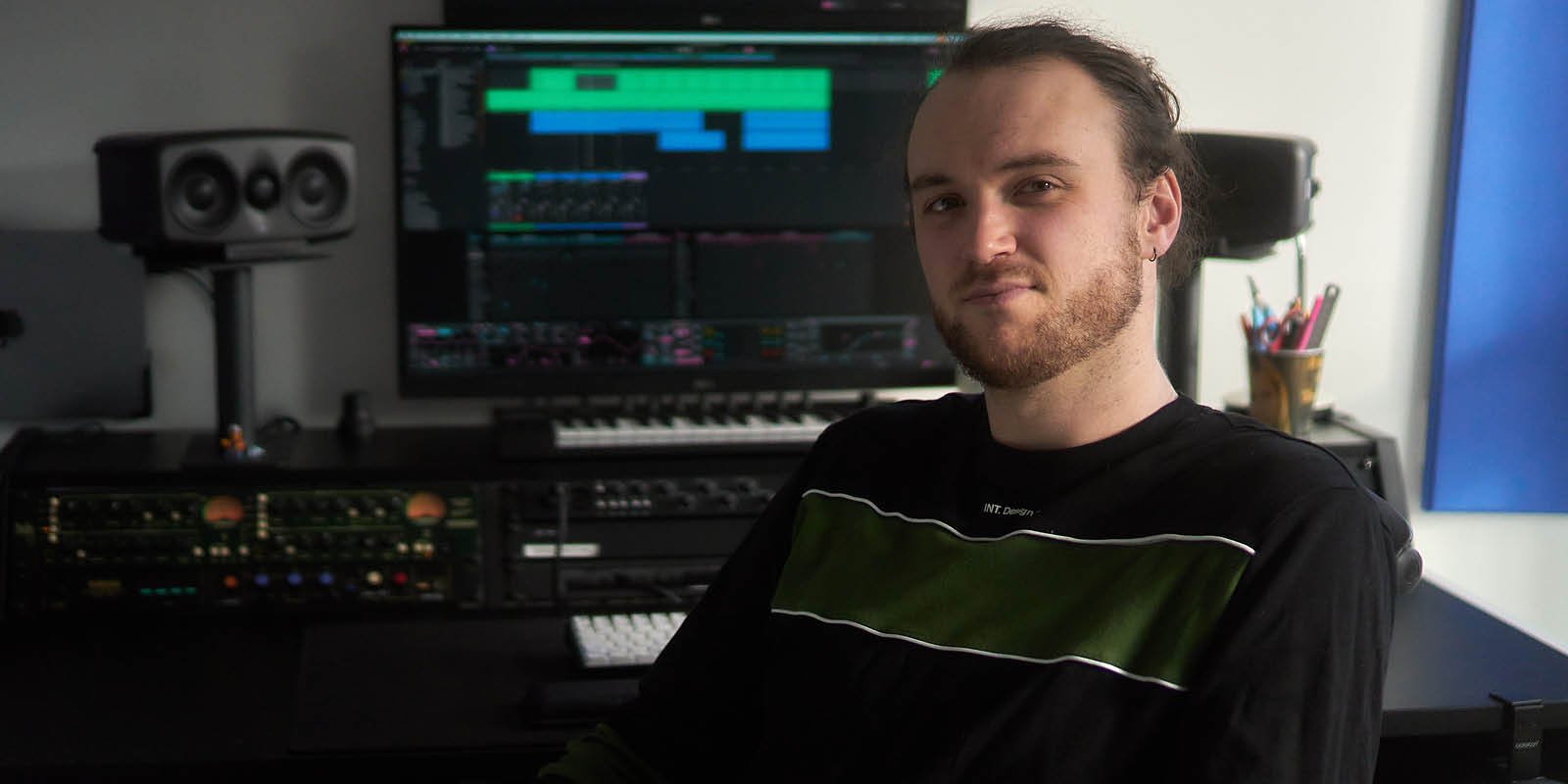
Since it first emerged in the early 1990s, there is a particular sound that has etched itself into the sonic identity of electronic music from Europe and beyond. It is a sound both timeless and steadfast in character, defined by its edgy chords, grainy textures and ethereal atmospheres. Pioneered by visionary artists like Moritz von Oswald, Mark Ernestus, and Deepchord, the sound - born from a fusion of dub reggae and techno music - is most commonly known as dub techno.
“I remember reading the words dub and techno together and being immediately interested”, recalls London-based artist Harvey Jones, who releases music under the aliases El Choop and Pizza Hotline. “The unique sound of those incredible filtered chords is what hooked me. I’d never heard anything like that before.”
Throughout the last decade, Jones has been a leading light among a cohort of newcomers to the dub techno sphere, infusing the genre with fresh vitality and rekindled passion. His distinctive releases pay homage to the ‘90s while seamlessly incorporating a modern twist, setting him apart as a rising talent in the field. While still in his twenties, he amassed a solid catalog of vinyl releases on labels such as EUTI, Default Position, and the renowned Echocord. With regular appearances at top-tier clubs and festivals and a recent album that generated over one million streams, he undoubtedly proves himself as an artist destined for great heights.
“Deepchord - ‘Departure’ was the first dub techno track I heard; it kicked everything off for me”, Jones reminisces. “It’s still one of my all-time favorites. The chords are so cold and hollow, I could listen to them for days. Other standouts for me are Prince of Denmark - ‘Cut 06’ and J.S. Zeiter - ‘Untitled (Revoke 002A)’.”
While dub techno has long since solidified its place in musical history, some critics have argued against its continued relevance. Yet, there's an enduring allure to the sound that captivates both die-hard fans and newcomers alike. Jones's emergence on the scene has perhaps been largely due to his ability to honor the genre's roots while innovatively pushing its boundaries into exciting new territories.
“I always wanted to make dub techno that’s tailored more towards the dancefloor,” he says. “If you search it online you will mostly find the more stripped-back afterparty vibes. Dancefloor dub techno can be harder to find. What makes a good dub techno record for me, is when the chord patterns, filtering, or overall timbres are so fascinating they can continue for the length of a track without becoming boring. It’s really difficult to pull that off as a producer. I’m always trying to reverse-engineer those tracks in my head. I adore it when I can’t work out how a certain sound was made, I become obsessive in finding out how.”
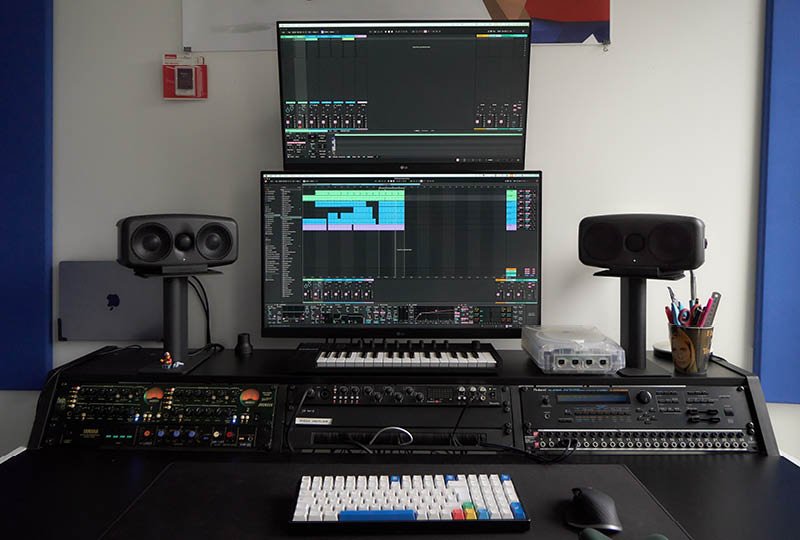
Jone’s home studio in London, UK
The success of Jones's music, coupled with his in-the-box production methods proves that making authentic dub techno doesn’t require a studio decked out with vintage hardware, it can also be achieved with a simple laptop and a copy of Ableton Live. Working with Live’s Sampler instrument, he explains how he sculpts simple minor chords into immersive, sonically intricate patterns using a myriad of filters, modulators and carefully constructed device chains. For a direct look at some of these processes, he has also kindly shared a Live Set, allowing you to observe his methods in action as detailed in this article.
*Requires a Live 12 license or the free trial
Sampling Dub Chords
In the context of dub-related musical genres, a "dub chord" refers to a sustained or staccato chord played on a keyboard or other instrument, usually serving as the fundamental harmonic element of the track. While dub chords can vary in composition and voicing, at the basic level, they typically comprise traditional minor chord triads. These triads consist of three notes: the root note, the minor third interval above the root, and the perfect fifth interval above the root. They often evoke sensations of suspense, melancholy, or introspection. In dub techno, their characteristics are enriched further by the liberal use of effects such as reverb, delay, and echo, adding to their hypnotic quality. Although traditionally made with synthesizers, the transformative “magic”, as Jones describes it, unfolds when these chords are put into a sampler.
“When I started out, I would always use synths to make my chords, but they didn’t sound authentic, unique, or characterful enough to me. One day I chose to experiment with a sample and it was a game changer, I’ve never looked back.”
For Jones, Live’s Sampler serves as a perfect tool for achieving an authentic dub techno sound while providing a shortcut around the arduous task of building synth patches from scratch. "Because I can get bogged down with that for ages”, he admits. “There’s just something magic about dropping a chord into a sampler; like the way it reacts when you repitch it. Maybe it has to do with the fact that I go straight to the filter in Sampler – because that thing sounds amazing. I’m just not happy with it if I have it streaming from a synth.”
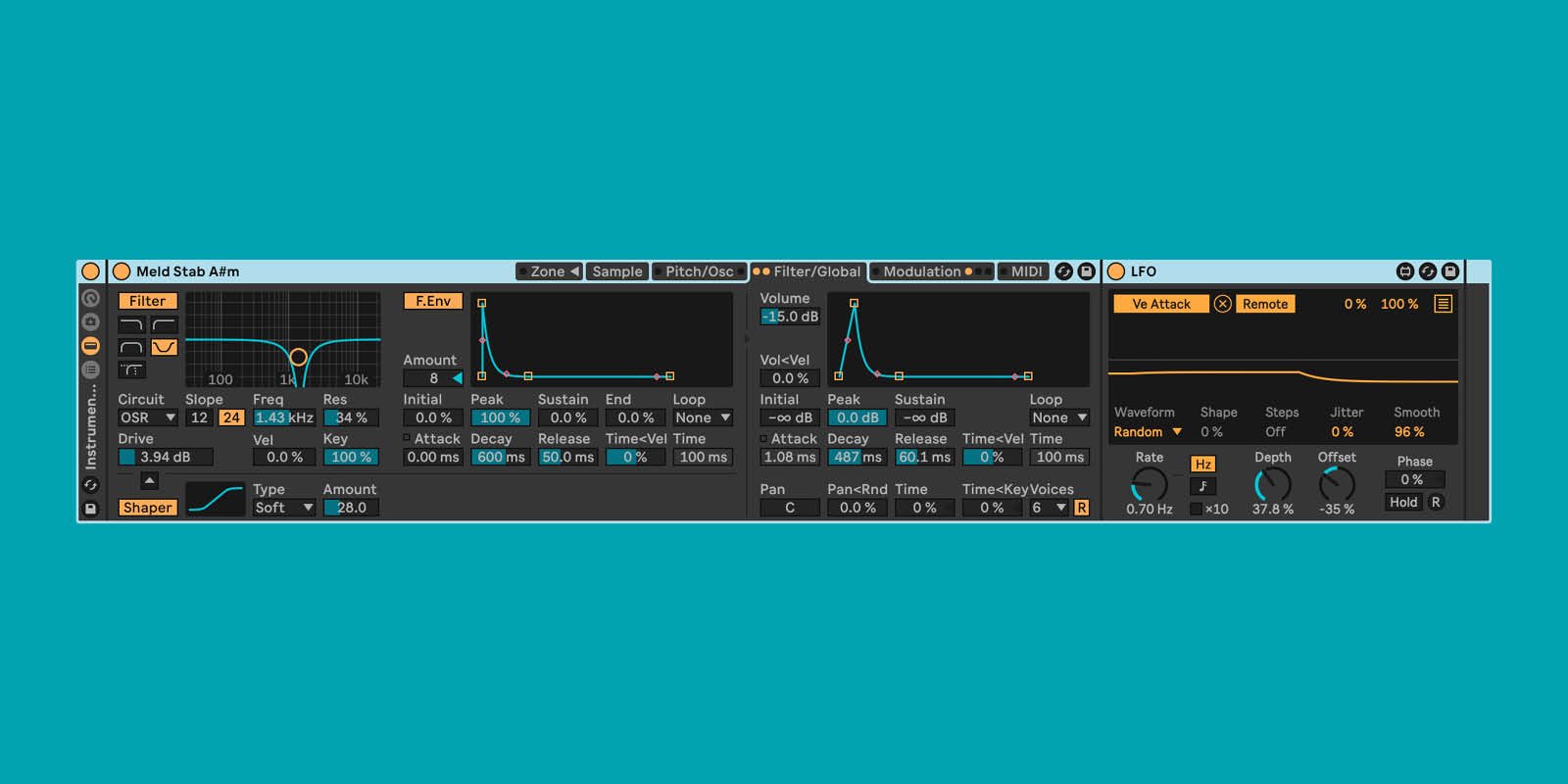
Jones uses Live’s Sampler instrument to craft authentic dub chords
When working exclusively within a DAW like Live, some may question the advantages of sampling a chord made in a digital software synth, only to then transfer it to a digital software sampler. However, Jones offers a compelling perspective, suggesting that his reasoning draws parallels with the traditional production methods of techno in the 1990s.
“I always say to people I want my music to sound cool – but what I think I really mean is authentic. So, the reason I prefer working with samples comes down to a sonic association thing. A lot of modern soft synths are engineered to be slightly different every time you trigger a note. When you sample a chord, there’s a sterileness to having it triggered verbatim every time that aligns with the authenticity of the genre. I also think the actual creative process of working with samples has a part to play in this. I’ve got folders and folders of chord stabs. They are all sampled with the filter open. But some of them have the filter half closed with a high resonance. I’ll go through them and drop them into a sampler while sequencing notes, and I find that’s a quicker way for me to get somewhere rather than building a synth patch – it keeps me motivated to work on the track.”
Synthesizing Dub Chords with Meld
As Jones immersed himself in the Live 12 beta, trying out its new features and devices, we took the opportunity to inquire about his firsthand encounter with crafting dub chords using Ableton’s latest synthesizer, Meld.
“I used the ‘Swarm Square’ oscillator in Meld because it's so harmonically rich. I then used Meld’s 12 dB bandpass filter. When it sweeps it sounds amazing because there's loads of harmonic content to be highlighted. For the chord itself, I’m using an inverted triad, but there are four notes, because one of them is doubled. I did that intentionally so it fills up the frequency spectrum a bit. I’m modulating Meld’s bandpass filter with an LFO device set to a random wave. You'll see I've set the modulation rate to 1/16 notes which can sound jarring on these kinds of chords. But, you can temper this down using the Smooth function, so it feels more controlled, yet there’s still this feeling of randomness.”
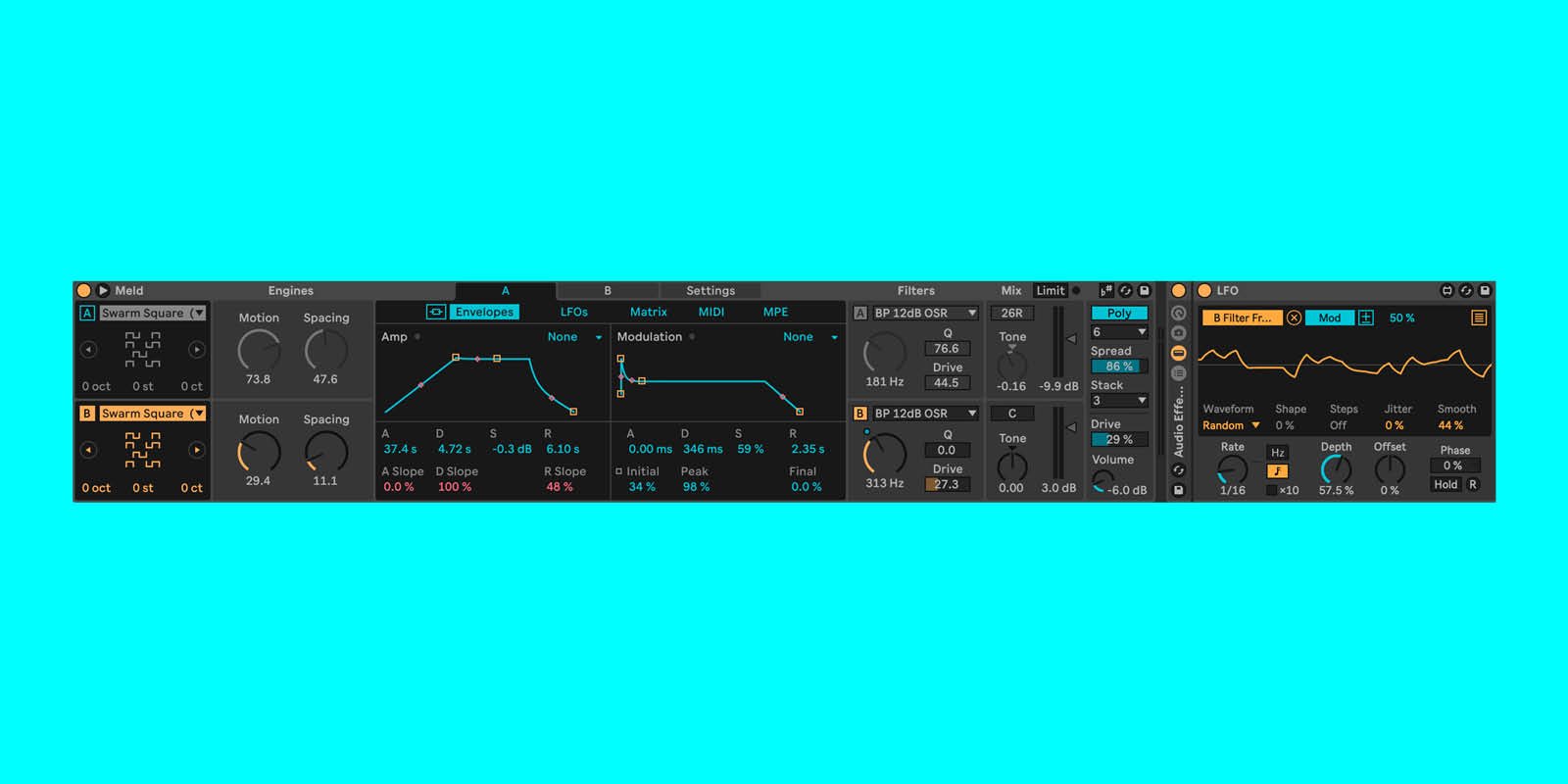
Jones maps an LFO device to Meld’s filter to help randomize his dub chord’s timbre
Jones highlights the use of another 16th-note modulation effect at the end of the chord’s device chain, which gives him a rapid, synchronized volume stutter. He cites this technique as versatile for troubleshooting other sound placement issues in his productions while also using it to clean up busy mixes or to enhance transitions.
“I configure Auto Pan's phase to either 360 or 0 degrees, effectively transforming it into a volume modulator," he explains. “Then, I set the rate to a rapid 16th note tempo for precise volume automation. I apply this to all kinds of sounds. I usually do it very subtly so everything is kind of fluttering. You can hear it on the chord I made using Meld, but here the effect is dialed up, turning it into an actual feature of the sound. I often just chuck this device on anything that doesn’t sound quite right. 80% of the time it solves the problem! It's like my get-out-of-jail card.”
Filters and Effects
Every dub techno artist has their own set of effects that they use to sculpt their chords into distinctive and interesting sequences. For Jones, this process involves the creation of bespoke device chains and Effect Racks; all carefully selected to achieve the desired result. But he notes that it’s not about adhering to a rigid formula; it's about adaptability and the willingness to explore whatever tools are necessary to bring his vision to life.
“I'll usually go from a Sampler, into an Auto Filter, into a distortion or two, then back into a couple of Auto Filters, some EQ, compression and maybe even another distortion. I like to use a lot of saturation plugins. I’m always on the hunt for convincing analog emulations. Some fantastic ones I use are Reel Bus 4, iZotope Trash, and PSP Vintage Warmer. We can’t forget reverb and delay too! Voxengo Old School Verb and Waves H-Delay are both great as they mimic that hardware sound so well. Overall though, I very much work on the principle of whatever tool it takes to get the job done at the time. If buckets of compression and saturation are what’s needed, then that’s what I do.”
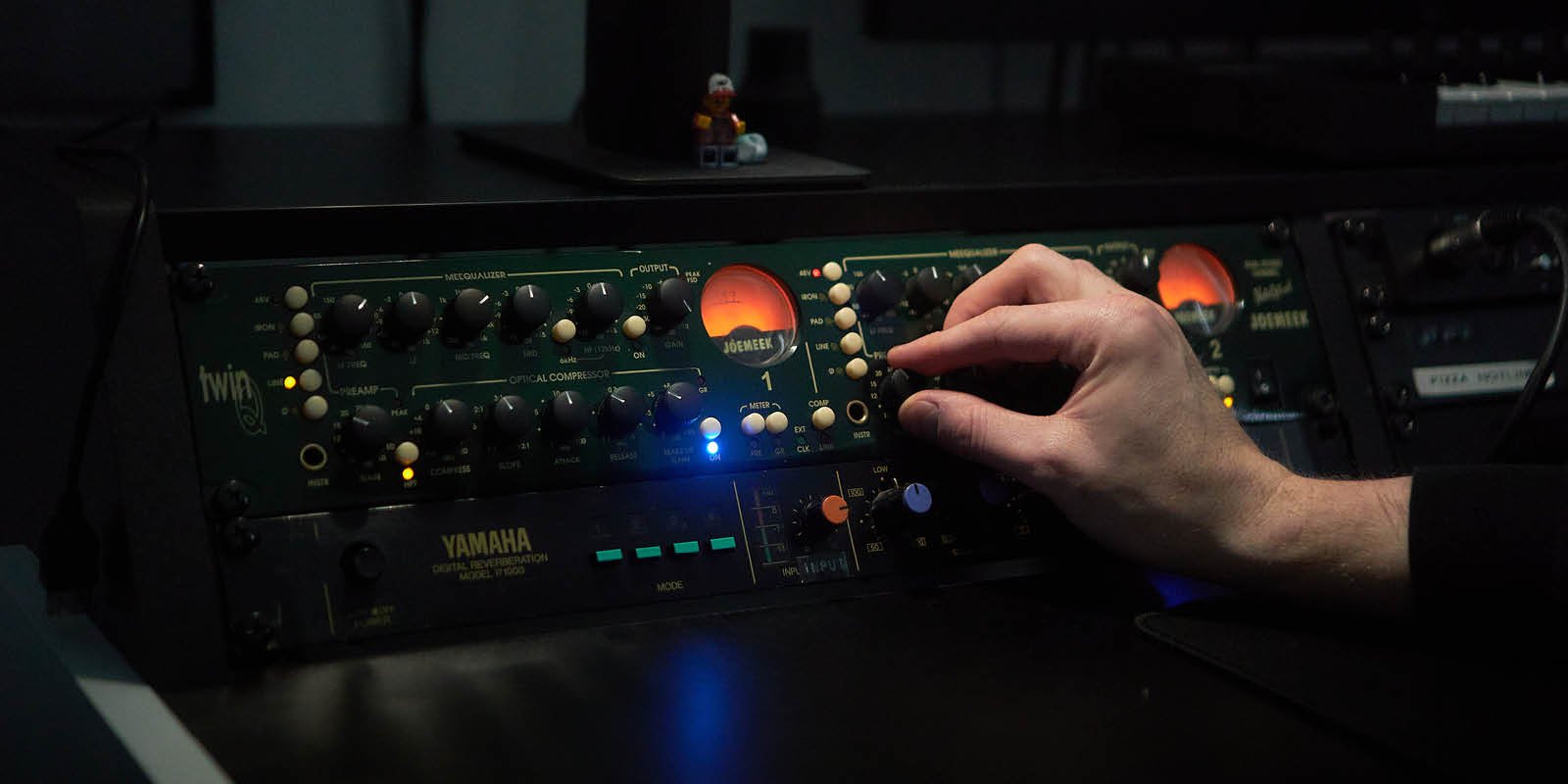
Jones tweaking his Joe Meek TwinQ 2 compressor
Despite the flexibility of his process, Jones reveals a steadfast commitment to certain rituals. “I always put my reverbs and delays on sends”, he emphasizes. But it is in the careful treatment of these sends that his creativity truly shines. “I will religiously process them”, he continues. “It can be something as simple as saturating a reverb, bit crushing a delay, or putting in a chain of two or three Auto Filters on a big reverb. Live’s Auto Filter is a brilliant way to create movement. I’ll sometimes have three or four instances in a row, all with different filter shapes. I’ll typically set one of them up as a band pass filtering the mids and then two as notch filters positioned in different places within the frequency spectrum. I’ll then offset the modulation rates so that the filters pass over each other. This creates a comb filtering effect which can sound similar to a phaser or flanger but you get more control. You can also create a rhythmical motif with the modulation rates which can be effective. I used this technique on my tune ‘Insane Sends’.”
As we delve deeper into Jones's craft, modulation emerges as more than just a minor concern – it serves as a cornerstone of his methodology, imparting rhythm, dynamism and character into his dub chords.
“Complex modulations help to make my chords sound interesting while keeping listeners engaged. Maybe I’ll have three notch filters in a row with a very narrow Q so they are quite invisible sounding, but you can feel them. And then on top of that, I’ll have a low-pass filter and maybe a high-pass filter modulating as well. So I might end up with five instances of Auto Filter all moving, but I pay a lot of attention to the modulation timing. I could have one that resolves each bar, one that resolves every two bars and one that is set to a triplet rhythm that doesn’t resolve perfectly when the other two do, creating a polyrhythm. In all forms of techno, polyrhythms are essential to break up repetition. LFO rates can be a stealthy way to reduce any repetition even further.”
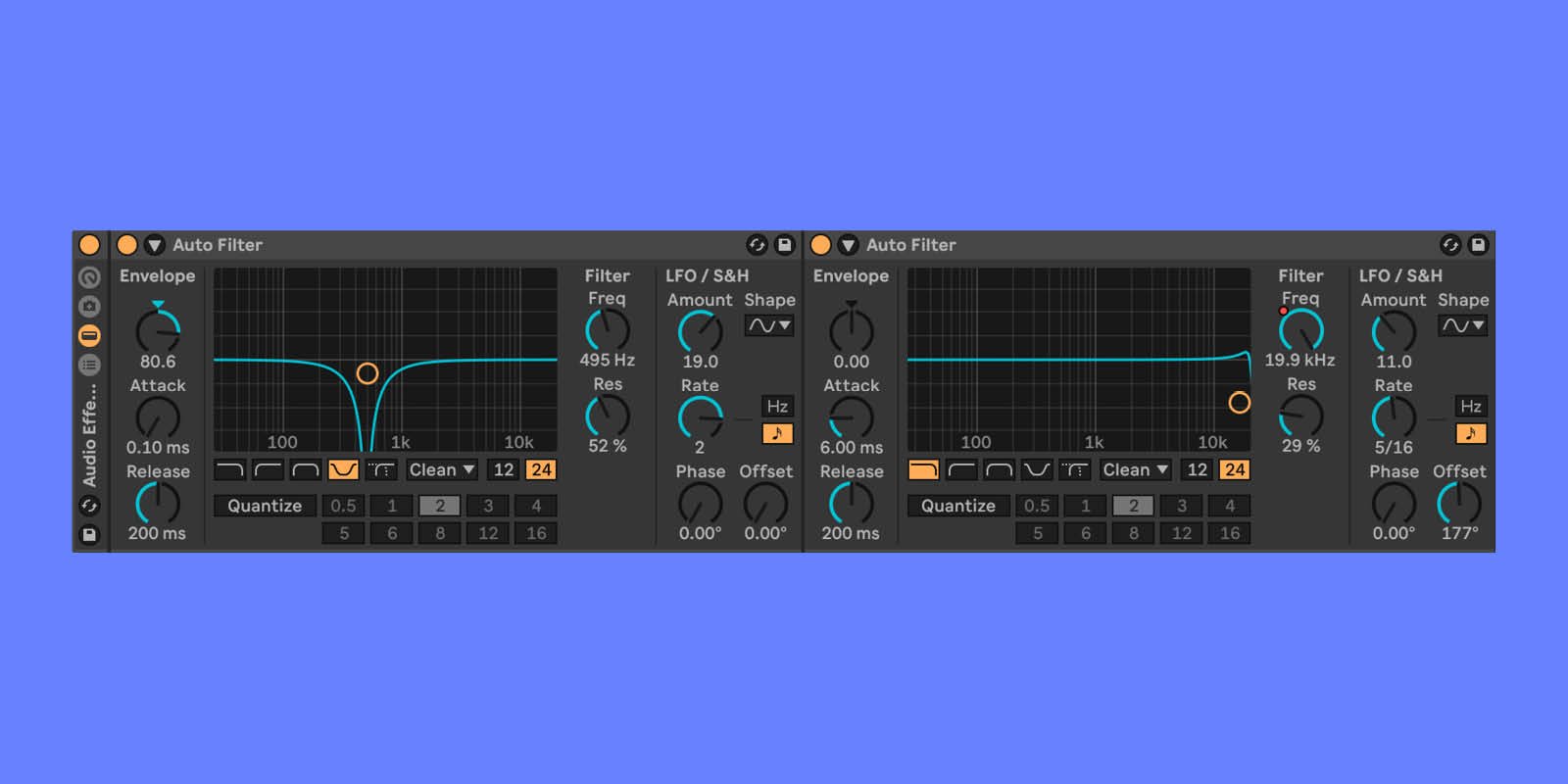
Jones uses several Auto Filter devices in serial to create complex modulations on his dub chords
Reverb
Reverb is a crucial tool in dub techno used for enhancing the genre's deep, spacious, and atmospheric qualities. Jones discusses how he uses multiple sends to manipulate chords through various reverbs. He mentions techniques such as employing mono reverbs with sidechain filters and using mid-side EQ to balance different reverberations in the stereo field.
“I often route a chord through a reverb send and then modulate the send with filters, rather than the other way around as most would typically do. I use several sends; for example, a chord may be directed into three different reverbs – such as a large, medium, and short bathroom reverb – which are all modulated. This allows for techniques such as having one reverb in mono with a 4/4 sidechain-like filter. Then a large reverb; focusing on the stereo field's full width. Adding a mid-side EQ enables me to cut the mid frequencies from it, allowing the bathroom reverb to sit neatly in the middle. Then it’s about ensuring that the rhythmic relationships between the reverb modulations are cohesive. There isn't a strict theory behind this; it's more about a feeling – reaching that moment where I think, 'Wow, I love how the modulations harmonize and blend.'”
Delay and Echo
The use of delay and echo effects are also integral to dub techno's signature sound, particularly on chords, as they enrich the music with rhythmic variations, adding a hypnotic and entrancing quality while emphasizing the genre's emphasis on spaciousness and texture.
For Jones, when crafting his distinctive sound, important principles guide his approach, like altering the delay signals by cutting the high and low frequencies before adding distortion effects. These techniques not only distinguish the delay signals from the original sound but also lend an air of authenticity reminiscent of the limitations of early tape machines.
“The main thing I would say about delay and echo is to always try and divorce it from the source signal”, he suggests. “Just try and make it sound as different as you can.”
Jones notes his use of ping-pong delays and the challenges they often pose due to their harsh stereo panning. “I can't stand it if it's panning hard left and hard right; which it always is”, he laments. “So after a delay, I use a Utility device in Mid/Side mode and turn it down a little. This narrows the ping-pong delay signal. I do that every time, it's essential for me.”
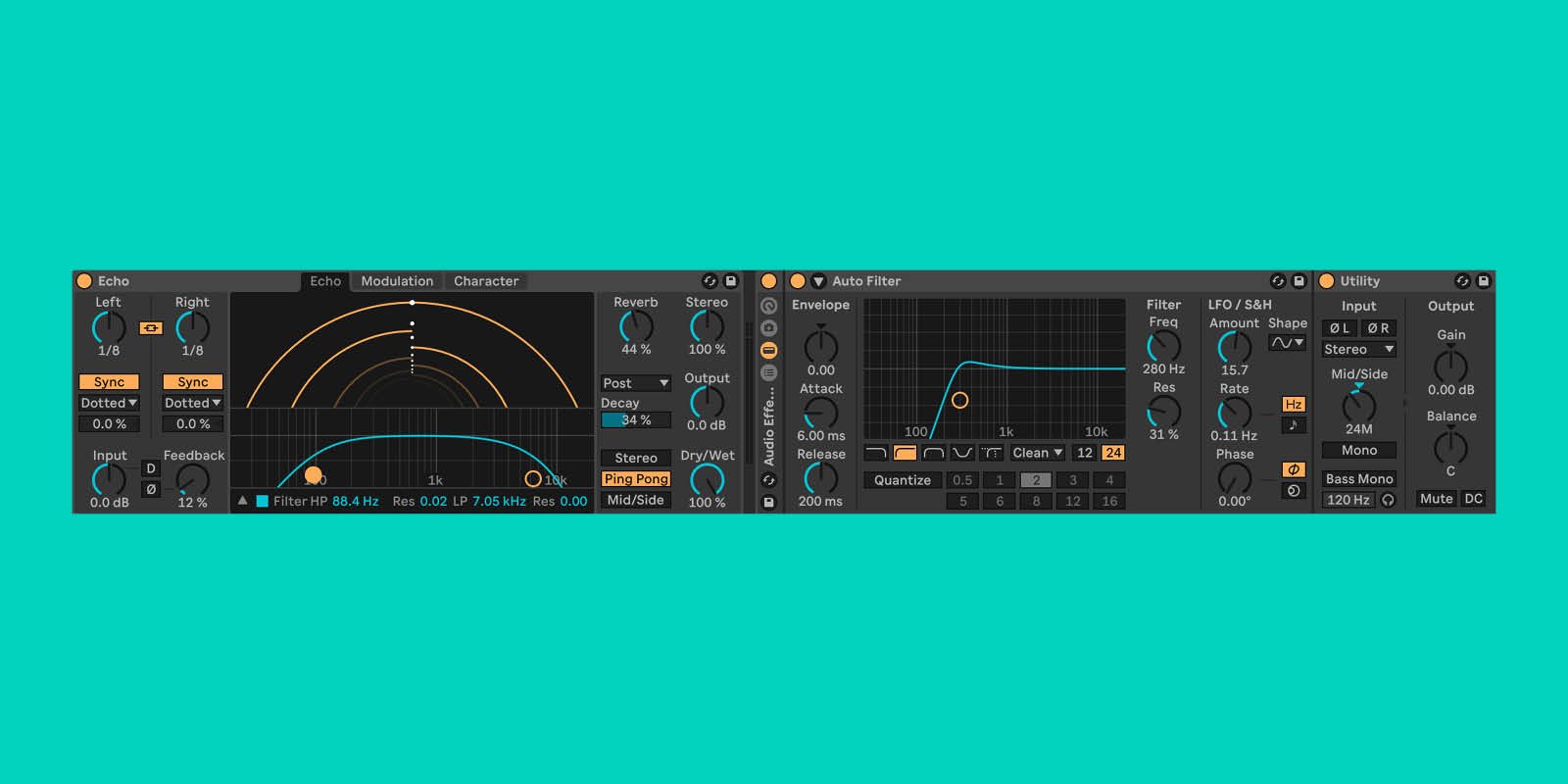
Jones uses the Utility device in Live to reduce the width of stereo panning caused by ping pong delays
When it comes to preferred plugins, Jones mentions Waves H-Delay and Fab Filter’s Timeless, alongside the Waves J37 tape machine emulation; which he lauds for its ability to imbue chords with that genuine vintage dub techno flavor. “You can get a chord sounding so old skool because it mimics a tape machine”, he says. “It sounds great when the feedback is really low, like one repetition – kind of like a slapback delay.”
Distortion
In his pursuit of shaping chords with a distinct character, distortion stands out as an essential tool in Jones's arsenal, transforming bland timbres into sounds akin to the early dub techno records he so reveres.
“I often use distortion to make chords sound less vanilla and more like a Deepchord record to be honest. I've only really heard the sound that I love in their tracks – with that really dusty, crunchy timbre. They used a lot of vintage synths routed into old mixing desks and recorded onto tape. Uhe’s Satin is a tape emulation plugin I use. There's one knob on it called Asperity which refers to small irregularities or imperfections on the surface of magnetic tape. When I dial that up I’m like 'That's it!, that's that sound!' It just adds this layer of graininess. Fab Filter's Saturn also has great modulation possibilities. That plugin is basically the secret behind all the dub chord sounds in my Echochord EPs.”
Given the current topic, it seemed an opportune moment to ask Jones if he’d had a chance to try out Roar, the latest distortion effect unveiled in Live 12.
“I'll be honest, I've always struggled with the distortion devices in Live, but Roar is the best-sounding one I've heard so far. A lot of attention has gone into it. The filters sound fantastic and the fact that there are two of them and you can change whether they are in serial or parallel is really helpful. That's the kind of simple thing people miss out on distortion plugins. In parallel it means the signal is split in two and put through both different filters, and you can hear them filtering independently. When it's in serial there’s one filter right after another and they are filtering the same sound. There are other routing options you can choose too. I didn’t realize it had a Multi Band option – I’ve not used that yet. And Mid Side; I've never seen that before in a distortion. What you could maybe do with that is set it up so you are filtering the sides differently or making them more saturated so it sounds wider and weirder.”
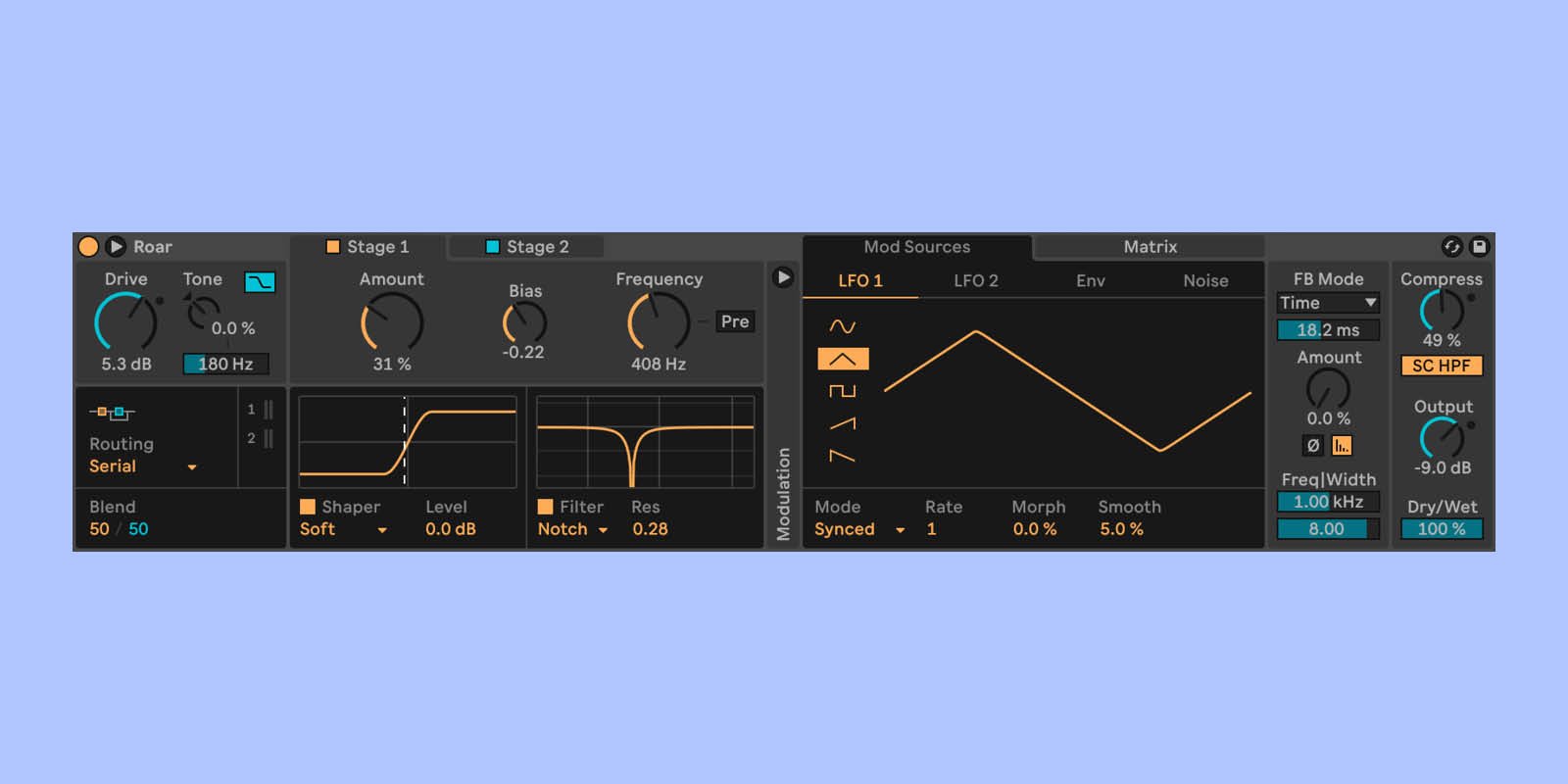
Jones experiments with the various filter routing options in Live 12’s latest distortion effect, Roar
Finalizing Dub Chords with Multi Band Dynamics
To round things off, Jones describes his use of the OTT preset on Live’s Multiband Dynamics effect to enhance the transient elements in his dub chords. This preset adds upward compression across the frequency spectrum; effectively boosting the quiet details in a sound that otherwise might remain unheard.
“When you've got the effect at 100% wet it makes the highs and the upper mids so intense. If you put it on a vocal, you can hear all those tiny nuances that you don't usually hear. And with dub chords, it's the same thing, it brings up all those detailed sounds, like maybe noise, or delay tails. I usually use it with dry/wet mix of about 10%.”
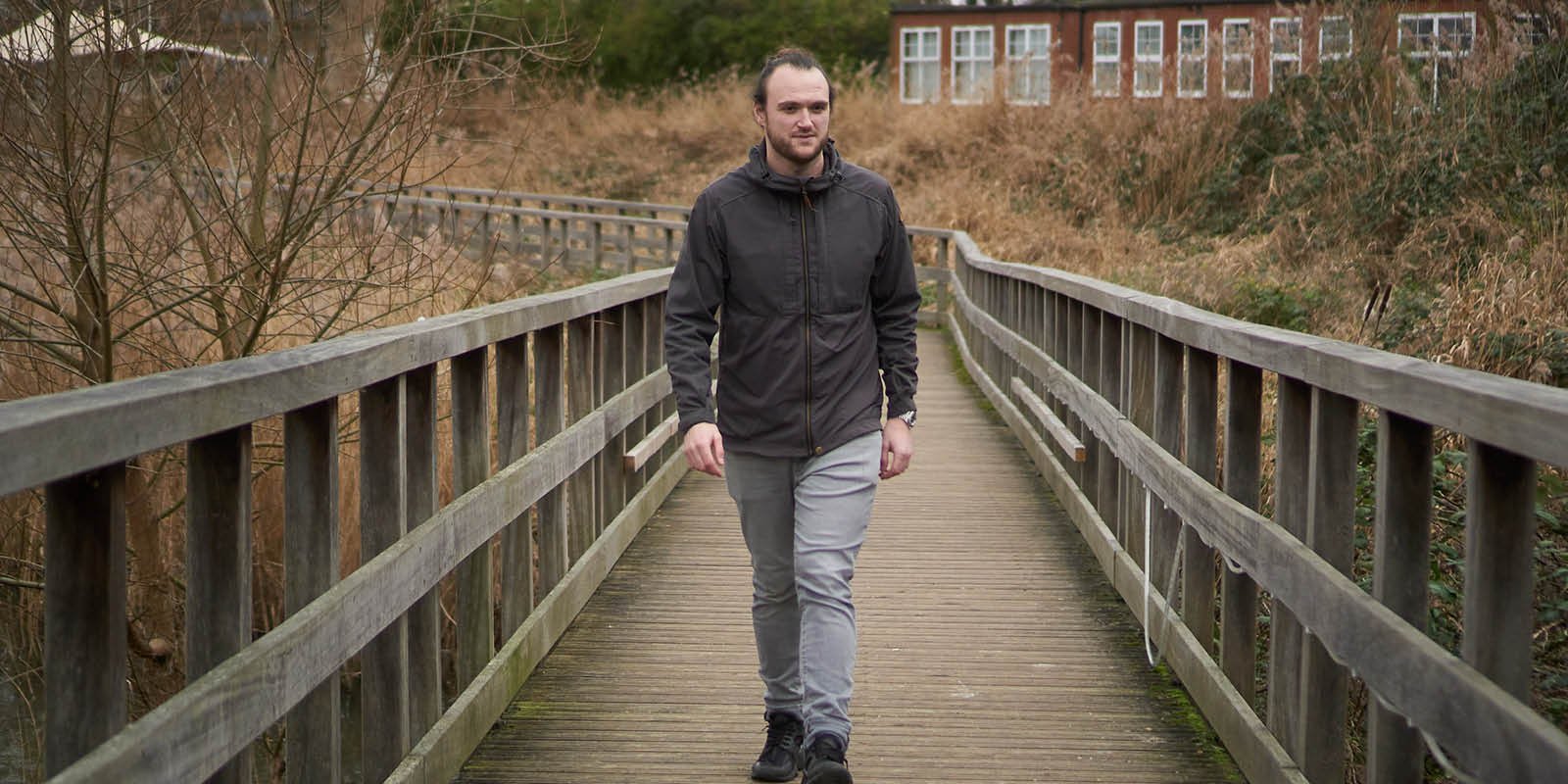
A Change of Direction: Pizza Hotline
Jones's passion for '90s electronic music doesn’t stop at dub techno. Amidst the pandemic, feeling somewhat weary of the usual routines, a visit to a friend's house rekindled an old passion, ultimately leading to a significant breakthrough in his music career.
“My friend had a Nintendo Switch, which reminded me of how much I used to love games. I realized there's some amazing music in these games, much of which is really hard to find. So, I started digging for about six months, and I just couldn't believe what I was discovering. Some of it was poorly mixed, and some of it was stylistically naff, but I really liked it. I couldn't help but try to make some music like this myself. It sounded like this innocent, catchy, melodic, not-dancefloor-geared jungle. So, that's when I made my album Level Select under the moniker Pizza Hotline, and it all kicked off! Now, I'm managing my YouTube channel and my Discord server. I've just landed quite a big job with a games company. They asked me to make remixes of their soundtracks, in a similar jungle/drum and bass style. I don't tend to cross-promote this music, because I assume people who are into my dub techno would be like, 'What is this guy doing?' I don't know if that's true though – because a lot of people message me through my El Choop social media accounts and say, 'I didn't know you made drum and bass; I really like it.' So I think there is some sort of association, as both genres fall into that ‘90s intelligent sound – because of the chords and stuff. It's all about those sampled chords; there's a huge connection there.”
Keep up with El Choop and Pizza Hotline
Text and Interview by Joseph Joyce
Photography by VirtuaLumin